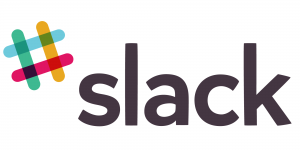Having recently raised $42.5 million in new funding Vancouver’s Slack is proving to be anything but a bunch of coffee-sipping West Coast slackers.
Slack is a communication platform, delivering real-time messaging, archiving and search.
President and cofounder Stewart Butterfield said the team often think of Slack as a search app disguised as a message app. “People might think they want messaging but the real value is getting all of your communications in one place and having it easily searchable. Think about the waves of change in general, dealing with the soaring amount of information is the one we’re most closely riding.”
“We’re designing for teams not the company. Individuals are kind of an atom, but teams are the atomic unit of any organization because they’re expected to be functioning together,” he added. “But the reality is that at big companies like when I worked at Yahoo, you see how the matrix type organization makes it more complicated for people.”
The increasing volume of messages we receive are not just from other people but other computers. The stream of social media notifications alone increases the daily noise. Butterfield sees that managing all of this messaging is something providing more value than people realize.
He estimates that his team of 20 each get about 100 messages a day from other people. The business has between 5,000 to 15,000 messages coming in from things like tweets, help tickets, bug reports, sign-ups for the service, when new teams are created, every crash report, and on and on. It’s not uncommon for teams these days to use 15-20 different services, so getting all of these messages in one place he said is a “huge win.”
The model is about encouraging people to have conversations in public, instead of one to one. Even if they’re not people on your team, at least engineers can see what the marketing department is talking about and customer support can see what engineering is talking about. Butterfield believes in “creating an ambient awareness of what other people in the organization are doing. It’s about coordinating without having stand up meetings, and getting status updates.”
Slack has grown out of a late 80’s tool pre-dating todays internet. Butterfield’s team found that using IRC chat met their internal communications needs. “It was missing a bunch of features that we thought were important, like being to log and archive messages. Once we had the archives, we wanted to search them. There was no good iPhone client so we built an HTML5 front end to browse the archives, and once we had that we wanted to be able to post from it. We wanted announcements when people uploaded files to the file server, database alerts and more. Basically hack, after hack after hack got all of the communication flowing into one place. A side effect of this was the fact the company didn’t use email at all. It wasn’t a policy decision, it just happened that no one would email each other because it was better to do it in IRC.
They rolled out a preview versus the less trustworthy sounding beta release in August 2013, and spent six months trying to make it easy for teams to switch over. Feeling it was good enough, they officially launched Slack in February 2014 and hit 20,000 paying customers.
Butterfield called it startup anthropology. What’s working for the Slack are good startup lessons to remember.
- Do a lot of research. They talked with people about how they used it, and what their reactions were. Get as much feedback as possible.
- They made sure all of their emails could be replied to
- They encouraged people to send them tweets
With the better of 20 years of business and startup experience to draw upon Butterfield shared that “people over-attribute a lot of success particularly in startups to the skill, ability and talent of the people doing it. Whereas, a lot of it is luck. Hard work counts, but there’s also the zeitgeist and little factors like the name, colors you choose, and your decision making process.”
With Slack’s early trajectory, Butterfield’s decision-making process is looking pretty spot on.




